Kumano Kodo Trail - Kyoto to Osaka
- Experience imperial Kyoto, the heart of Japan’s traditional culture
- Follow in the footsteps of Japan’s Imperial family on the Kumano Kodo Trail
- Walk through stunning rural scenery - Japan as it once was
- Relax in an outdoor bath at Yunomine Onsen
- Explore the Grand Shrine at Hongu
Gallery
Itinerary
Day 1 Arrive in KyotoArrive in Kyoto and check-in to your hotel or ryokan in central Kyoto. Kyoto is one of the world’s most culturally rich cities scattered with hundreds, if not thousands, of pockets of incredible beauty. The city has 17 UNESCO World Heritage sites, 1600 Buddhist temples, over 400 Shinto shrines and 24 museums.
As home to the Japanese Imperial family from 794 to 1868 it has been central to Japanese history and is a city that must be on your list.

This modern hotel is 3 km from both the Kiyomizu-dera Buddhist temple and Nijō Castle. The air-conditioned rooms boast smooth colours, stylish lamps and a flat-screen TV. Each private bathroom features a spacious shower area with a bathtub. A fridge and an electric kettle with green tea are provided.

One of Kyoto's most popular hotels, as the location is second to none. Rooms are comfortable and modern, with western beds and bathrooms. Breakfast is served buffet style in the cafe on the 1st floor, while those wanting a traditional Japanese course meal are welcome to try the "hamatoku" restaurant on the 2nd floor.
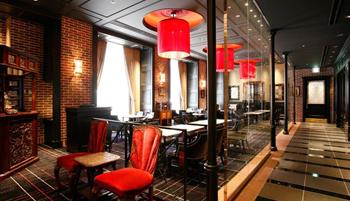
A hotel that combines the best of Kyoto's stylish culture and Britain's traditional heritage. The design is based on the arts and crafts of Scotland, particularly Edinburgh, its ancient capital.
Today you will fall in love with the Japan of your imagination as you discover the secret gardens, hidden courtyards and floating temples of Kyoto. Perhaps even catching a glimpse of an elusive geisha.
Your local guide will meet you at your hotel in the morning, and you will have a full-day tour using a mixture of public transport and walking. We suggest visiting Kiyomizu Temple, Sanjusangendo Temple, and a walk along the Philosophers Path or you can choose your own itinerary.

This modern hotel is 3 km from both the Kiyomizu-dera Buddhist temple and Nijō Castle. The air-conditioned rooms boast smooth colours, stylish lamps and a flat-screen TV. Each private bathroom features a spacious shower area with a bathtub. A fridge and an electric kettle with green tea are provided.

One of Kyoto's most popular hotels, as the location is second to none. Rooms are comfortable and modern, with western beds and bathrooms. Breakfast is served buffet style in the cafe on the 1st floor, while those wanting a traditional Japanese course meal are welcome to try the "hamatoku" restaurant on the 2nd floor.

A hotel that combines the best of Kyoto's stylish culture and Britain's traditional heritage. The design is based on the arts and crafts of Scotland, particularly Edinburgh, its ancient capital.
Taking the train, you will travel to the mystical Kii Peninsula via Osaka. Your train will hug the coastline until you reach the small town of Tanabe. From there you will board a bus (payable locally) and then start the walk on the Kumano pilgrimage route from Takijiri. From the start at Takijiri Oji, the path climbs steeply up to the ridge-top village of Takahara (2 hours). Stay at a lovely ryokan with both Japanese and western style rooms.
Ascent/Descent: +405m (1328ft)/-171m (561ft)

Kirinosato offers friendly service, magnificent views from each room and delicious meals with locally produced organic rice and vegetables. There are three Japanese-style tatami-mat rooms and five western-style rooms for guests. All guestrooms have private ensuite toilet; guests use the two gender-segregated communal bathing rooms. Water for the hot spring bath comes from Wataze Onsen in Hongu. Bathing is available from 3pm to 11pm and from 7am to 9am. If you are staying in a tatami-mat room, please lay out your futon yourself in the evening. Wifi is available in the lobby area.

Akatsuki is a “Minpaku” or homestay run by the cheery Maeda couple, in their two story home with the guestrooms on the second floor. The house itself is lovingly maintained and decorated with handmade crafts and flowers, and is a comfortable and welcoming homestay environment.

Suzushiro is a cozy cottage in Takahara owned by the young Kashiwagi family. The views from the facility and expansive deck are fantastic. There is a bedroom, sitting room, loft, mini-kitchen, toilet, and bath.
The Nakaheji has been established as one of Japan's National Historic Roads and here the paths are clearly defined, and flagstones have been laid in some places to make the climbs easier. Today’s walk undulating walk through gorgeous rural scenery passes several oji shrines before descending to the small village of Chikatsuyu.
Ascent/Descent: 555m (1820ft)/581m(1906ft)

The cozy cottage has a Japanese style room, small loft, dining room, and kitchen. The dining room features a giant wooden table. The windows look onto the surrounding garden planted with a variety of flowering trees. Guests often enjoy sitting on the deck or in the private gazebo taking in the peaceful location.

Minshuku Chikatsuyu is a small guesthouse located in the Chikatsuyu village along the Tonda River. The Hisui-no-yu onsen is a hot spring bath next to the inn. The water is famous for its smooth texture. One of their specialty dishes is ayu (sweet fish) rice. The view from the dining room opens onto the river and mountains beyond.

Chikatsuyu Cherry Garden “Sakura-no-Sono” is a set of Japanese houses on the Kumano Kodo pilgrimage route on the west side of Chikatsuyu village, the first buildings on the left when entering the village. Both homes are lovingly maintained and elegantly decorated.
Today’s walk is pretty tough but well worth the effort! An initial climb takes you up through the mountains to Mikoshi-touge (pass). From here the path levels off slightly before reaching the grand shrine Kumano Hongu Taisha at the heart of the sacred Kii mountains. Kumano was said to be the entrance to the land of Yomi, the ‘other world which spirits travelled to in Japanese mythology. From the shrine, you take a bus (payable locally) to Yunomine Onsen one of the oldest natural hot spring onsen villages in Japan.
Ascent/Descent: 1070m (3510ft) /1305m (4281ft)
Please note: if Yunomine Onsen is full you will be booked in the nearby village of Kawayu.

Minshuku Kuraya is a small guesthouse with over 100 years of history and features traditional Japanese construction. It is located by the creek in the middle of the Yunomine Onsen hot spring village. Minshuku Kuraya serves local “family” meals and the hot spring bath is open 24 hours. The communal dining room is surrounded by sliding shoji paper screen doors. The guestrooms look out onto the village. For those looking for an authentic guesthouse with Japanese architecture, this is a good choice.

Overlooking the Ōta River, this polished hot spring hotel surrounded by lush landscape is a minute's walk from the Kawayu Hot Spring and 5 km from the Kumano Hongū Taisha Shinto shrineOverlooking the Ōta River, this polished hot spring hotel surrounded by lush landscape is a minute's walk from the Kawayu Hot Spring and 5 km from the Kumano Hongū Taisha Shinto shrine

Located a few hundred meters south of the Yunomine Onsen village on a ridge above the Yomuragawa River. It is a quiet accommodation and serves a variety of different set meals that compliment the seasons. All of the rooms are Japanese style. There are both indoor and outdoor baths, each with very good quality water.
An extra day in your wonderful onsen Ryokan in Yunomine is a welcome break after a few days on the trail. You can do some sightseeing, or simply sit back and relax. Or for those still feeling energetic there is an optional short walk available to Dainichi-goe shrine.
Akagi-goe: 7.8km ( 4.8miles) - Ascent/Descent: 447m (1466ft) /251m (823ft)
Dainichi-goe: 2.8km (1.7miles) - Ascent/Descent: 261m (856ft) / 186m (610ft)

Minshuku Kuraya is a small guesthouse with over 100 years of history and features traditional Japanese construction. It is located by the creek in the middle of the Yunomine Onsen hot spring village. Minshuku Kuraya serves local “family” meals and the hot spring bath is open 24 hours. The communal dining room is surrounded by sliding shoji paper screen doors. The guestrooms look out onto the village. For those looking for an authentic guesthouse with Japanese architecture, this is a good choice.

Overlooking the Ōta River, this polished hot spring hotel surrounded by lush landscape is a minute's walk from the Kawayu Hot Spring and 5 km from the Kumano Hongū Taisha Shinto shrineOverlooking the Ōta River, this polished hot spring hotel surrounded by lush landscape is a minute's walk from the Kawayu Hot Spring and 5 km from the Kumano Hongū Taisha Shinto shrine

Located a few hundred meters south of the Yunomine Onsen village on a ridge above the Yomuragawa River. It is a quiet accommodation and serves a variety of different set meals that compliment the seasons. All of the rooms are Japanese style. There are both indoor and outdoor baths, each with very good quality water.
A pre-arranged taxi takes you to Koguchi. From here you walk this glorious final section of the Kumano Kodo trail, over the Ogumotorigoe Pass, where you can catch a glimpse of the Pacific Ocean. It then descends to Nachi-san, the location of Nachi Taisha (Grand Shrine), one of the three ‘Grand Shrines of Kumano’ and Nachi-taki waterfall, Japan’s highest. You then have a short bus ride from Nachi-San to the coast at Kii-Katsuura. The end of a beautiful coast to coast walk.
Ascent/Descent: 1135m (3723ft) /860m (2821ft)

Manseirou is located in front of the pier and offers the views of Katsuura Bay and old streets of Katsuura. Manseiro's garden features open air baths, while Chiyo no Yu-bath changes colors according to the seasons and weather.

UPGRADE HOTEL
Hot-spring baths, massages and a summertime outdoor pool can be enjoyed at Nakanoshima, located a 3-minute ferry ride from Kanko Sanbashi pier. Traditional Kaiseki dinners and Japanese rooms with views of Nachi Bay are featured. Guests sleep on futon bedding on a tatami (woven-straw) floor. All rooms are air-conditioned and include an LCD TV, an en suite bathroom, green tea and Yukata robes.
You have some time to explore Kii-Katsuura. Take the train to Osaka (4h).
Osaka is the heart of Kansai and second only to Tokyo as a thriving urban environment. Food is what drives Osaka and it is deservedly known as Japan’s food capital.

Hotel Vischio Osaka by Granvia is a newly opened hotel in the heart of Umeda Osaka. Located just 5 minutes’ walk from JR Osaka Station. Connecting you to the pulse of the city.

Conveniently located in Namba, central Osaka, Hotel Monterey Grasmere Osaka is a modern hotel that held its grand opening back in the summer of 2009. There are many popular areas within walking distance of the hotel, which is also directly connected to Namba Station. The guest rooms, located on floors 24 through 31, are designed in the image of a British manor house / stately home.
Your trip ends this morning. Fly out from nearby Kansai Airport, or extend your trip with one of the suggestions below.
Other Information
Is it for me?Offers a great combination of rural and modern Japan, with time on the trail and in the vibrant cities of Kyoto and Osaka. The walking is moderate but does involve some days with fairly steep ascents and descents although the longer walking days can be shortened. Full details of shortening or skipping walks are provided with your detailed final documents on arrival. Overnight accommodation is in very traditional minshuku and ryokan.
Pilgrimages | For those looking to follow a path of self-discovery. Our Pilgrimage and Camino routes take you on a journey through diverse landscapes and local flavours, while meeting like-minded adventurers along the way.
Inn to Inn Walking | Walk from place-to-place changing accommodations each night. Generally staying in B&Bs, inns, and guesthouses.
Solo Travellers, Families with Teens
The minimum age for this tour is: 12 Years
The walk is graded moderate but it does involve some days with fairly steep ascents and descents. The terrain can also be quite tricky underfoot as wet tree roots can be quite slippy at times. The longer walking days can be shortened if you want to cut down the distance. On most days you will be walking between 2 and 6 hours although there is one longer day of up to 8.5 hours so you should be an experienced walker to get the most from this trip.
In Kyoto and Osaka, we use carefully selected 3 or 4* western-style hotels. We use local family-run accommodations and traditional Ryokan and Minshuku Inns on the walking section.
The classic Japanese inn, Ryokan come in many styles, but are united by flawless service and exquisitely-prepared food. Ryokan may be in modern or traditional wooden buildings, but rooms are always Japanese style, with Tatami (straw mat) floors and futons for sleeping laid out in the evening by the Ryokan staff. Minshuku are similar to Ryokan but family-run and with less formal service. Rooms are more simply-furnished and guests typically lay out their own futons. Regardless if you have requested a double or a twin room you will get 2 separate futons to sleep on in your traditional Japanese room.
Ryokan rooms sometimes have private bathrooms. Minshuku offer toilet and bathing facilities ‘along the corridor’. Baths may be smaller rooms, used privately in turn by guests; or they may be larger communal bathing suites, one for men and one for women. As availability is limited we cannot guarantee or inform you in advance of booking which type of Japanese Inn you will overnight in.
We provide you with detailed information on the etiquette of staying in these beautiful traditional Japanese Inns.
Solo Walkers & Single Rooms
This trip is available to solo walkers and a limited number of single rooms are available, although a single/solo supplement is payable.
Meals
Japanese cuisine is the highlight of many people’s visit to Japan and this is especially the case on the Kumano Kodo Trail. Your trip includes all breakfasts and 5 evening meals whilst on the trail.
Most meals will be Japanese cuisine, though breakfast in western-style hotels usually includes more familiar choices.
Dinner and breakfast in ryokan and minshuku are set meals, usually with a whole succession of different dishes which will delight you. Alcoholic and soft drinks are not included with meals. Tipping is not customary at hotels and restaurants in Japan.
The route is partly way marked (in English and Japanese) and we provide detailed route notes and topographic maps so you should have no problem following the trail.
- 2 Nights 3 or 4* hotel accommodation in Kyoto
- 5 Nights minshuku or ryokan (guest house) accommodation on the Kumano Kodo trail
- 1 Night in a 4* hotel in Osaka
- 8 Breakfasts
- 5 evening meals (on the Kumano Kodo excluding drinks)
- Train tickets from/to Kyoto or Osaka
- Private guided tour of Kyoto
- Detailed information pack with local travel information, detailed route notes, maps and tips
- Telephone support from our local, English speaking, representative
- International flights and travel to Kyoto/from Osaka
- Drinks with meals
- Lunches & Snacks
- Evening meals in Kyoto & Osaka
- Local buses on day 3, 5 & 7 should be paid locally (around ¥2500, £18 or $28)
- Baggage forwarding is not included, though we provide instructions for how this can be easily arranged locally or you can pre-book as an optional extra
- Travel insurance (required)
- Additional nights on the trail or in Kyoto, Tokyo or Osaka (prices on request for Kyoto and Osaka)
- Daily Luggage Transfers (Takijiri to Kii-Katsuura)
This trip is available year-round but we recommend April to November. The region may experience occasional snow from December to February and the hours of daylight are much less so during these months we may offer an alternative itinerary detailed below. It can get quite hot and sticky in July and August so please keep this in mind if you are looking to travel then.
Accommodations are busy and may charge extra during the following Japanese holiday periods: New Year (29 December to 04 January), Golden Week (29 April - 06 May 2026), and O-bon Festival (13 - 16 August 2026). Please note, that during these peak holiday times, prices will be confirmed according to what availability there is for certain accommodations and availability will be very limited. Accommodations will also be booked up very quickly for peak Cherry Blossom period which generally falls between late March and early May. Please be aware that bookings during this time may require a change of itinerary or accommodation. There is very limited accommodation in Takahara so if the inn there is full you will stay in Tanabe, on the first night and the following day complete the first two sections of the walk to Chikatsuyu.
WINTER ALTERNATIVE DURING JANUARY AND FEBRUARY
In order to make the itinerary work during the winter months, we offer a slightly adapted version during this time. This varation also highlights the location of Kawayu Onsen which is a hotspring town. For a limited time during winter, the thermal river is transformed into a giant open-air bath created by digging down through the rocky river bed to allow the natural hot spring waters to rise closer to the surface and bring the temperature of the natural mineral river to a soothingly warm temperature to contrast the cold winter temperatures, and locals and travellers alike can soak and relax in the hot water (around 40 degrees Celsius).
The layout for this itinerary is as follows:
Day 1: Regional Farm Experience in Azikuno - overnight in Kii-Tanabe
Day 2: Hike from Takijiri to Chikatsuyu - overnight in Chikatsuyu
Day 3: Hike from Chikatsuyu to Nonaka and Hongu - overnight in Kawayu Onsen
Day 4: Hike from Ukegawa to Koguchi - overnight in Koguchi (* or Kawayu Onsen if you prefer to relax and enjoy the area)
Day 5: Hike from Koguchi to Nachi-san - overnight in Kii-Katsura
Day 6: Onward travels
By Air:
The best airport to arrive at is Osaka Kansai Airport (KIX), which has flights from international destinations. You can also fly into Tokyo Narita (NRT) and take an internal flight or the shinkansen (bullet train) to Kyoto (3h30).
The West Japan Rail Company operates services between Kansai Airport and Osaka/Kyoto. Timetables and route maps can be found on their website. The Airport Express HARUKA (Kansai Airport Line) takes approx 75 mins to Kyoto.
Getting around:
Your package includes train tickets from/to Kyoto or Osaka. The public transport system in Japan is world class and your pre departure information pack has detailed information on tickets, trains and how to use public transport easily.
By Air:
You can fly out of Osaka Kansai Airport (KIX), which has flights to many international destinations. You can also fly out of Tokyo Narita (NRT) by taking an internal flight or the shinkansen (bullet train) from Osaka (3h30).
The West Japan Rail Company operates services between Kansai Airport and Osaka. The Airport Express HARUKA (Kansai Airport Line) takes approx 75 mins to Kyoto.
Luggage transfer is not included during your walk as standard. Whilst this is different to many of our tours, there are important reasons for this. Many of the smaller accommodations we use along the trails aren't set up to handle larger suitcases. They often have delicate tatami flooring and narrow hallways or staircases that can be easily damaged by heavy or large bags.
We would encourage you to pack light and bring only what you truly need for the walk. All accommodations along the trail provide basic amenities such as towels, toothbrushes, soap, etc., ensuring a comfortable stay without the need to carry too much. Most of our partner inns also provide yukata, which can be worn as pyjamas—another great way to keep luggage light! Additionally, many accommodations offer laundry facilities, so with just a bit of planning, it’s easy to pack a minimal amount of clothing and schedule in a washing day mid-tour.
We highly recommend using the Takkubin luggage courier service to transfer your bags whilst on tour in Japan.
Takkubin (sometimes Takkyubin or Takuhaibin)
Takkubin is a luggage courier service which you can only book once you are in Japan. It is reliable and well-priced at approximately £15 per journey (you will have 2 on this itinerary). The price is based per bag under 25kg/55lbs.
Your bags will not be moved each day. On the Kumano Kodo walk, you have access to your luggage only when in Yunomine Onsen. The other nights you have to carry your essentials with you. We recommend this method as you do not have to navigate the trains and buses with your main large suitcase. Additionally, in the accommodation you are provided with robes and shoes to wear in the traditional houses.
With Takkubin your Kumano Kodo luggage transfers and access would be:
- You send your luggage from Kyoto (or from wherever you are before you start your walk) to Yunomine Onsen. You travel by train & bus with your overnight things (and no heavy suitcase) to Takijri and walk to Takahara. No access to main bag.
- Walk to Chikatsuyu. No access to main bag.
- Walk to Yunomine. Access to main bag.
- Day Yunomine. Access to main bag.
- Send your main bag to the destination after your walk (Osaka). You travel/walk to Kii-Katsuura. No access to main bag.
- Kii-Katsuura. Train to Osaka (no heavy suitcase). Reunited with luggage at hotel at end of day.
Exactly where you leave and collect your bags for Takkubin is clearly explained in your final information. It is a widely used and efficient service, with many tourists and locals using it every day.
The distances and ascent/descents are approximations of the recommended routes. Please be prepared by packing all necessary items, for example, proper rain gear (jacket and pants), sun hat, sunscreen. Your information pack has a detailed equipment list which includes standard walking gear such as good walking boots or shoes, warm and waterproof clothes, and lightweight clothing for summer.
Dietary and Allergies on the Kumano Kodo
Japanese Inns prepare their meals in-house and take great pride in their cuisine which showcases the best seasonal and local produce it has to offer! This means that dietary requests such as gluten-free and strict vegetarian and vegan are difficult to cater to. Gluten-free is still poorly understood in some parts of Japan, and the base ingredients of Japanese cuisine contain a large amount of gluten or fish. Whilst, in some cases you think it's easy for them just to make you vegetables and rice but this is not the case! The inns may be family-run and simply cannot make alternate meals due to resources at hand or more commonly that the meals and hot spring baths are the largest attraction to staying at an inn for domestic Japanese travellers and the innkeeper's sense of pride will cause them to simply decline these requests fearing the customer will be unsatisfied.
Interestingly, on the Kumano Kodo itself, there are many young families or those simply fed-up with the rat race in the larger cities who have decided to move to regional Japan. You may find that these residents have set up local businesses such as Japanese inns, cafes, and coffee roasters. These residents are more progressive in attitudes and many have opened a vegan cafe, or are willing to substitute the fish stock for mushroom or seaweed stock at their inns.
Getting Around
Your package includes train tickets from/to Kyoto or Osaka to the start of the walk and from the end of the walk back to Osaka or Kyoto. The public transport system in Japan is world class and your pre-departure information pack and itinerary has detailed information on tickets, trains and how to use public transport easily and what trains/buses to take from Kyoto/Osaka to Kii-Tanabe at the start of the walk.
Visas
Please check your visa requirements with the foreign office or the embassy in your country of residence before travelling to Japan.
British nationals wishing to visit Japan for three months or less for business, tourism or family purposes etc (but not to work for a local employer) may do so without a visa. You must have a valid passport and an onward/return ticket. Please visit www.gov.uk/foreign-travel-advice/japan/entry-requirements for up to date information.
Kumano Kodo Pilgrimage and Dual Pilgrim Certificate
The Kumano Kodō is an ancient pilgrimage located on the remote Kii Peninsula. With a history going back more than 1,000 years, the Kumano Kodō has long been a pilgrimage walked by people from all levels of society, ranging from common folk to emperors. This ancient pilgrimage is made up of several trails, including the Nakahechi, Kiiji, Iseji, Kohechi, and Ohechi. Our 6-day Kumano Kodō self-guided tour explores the classic Nakahechi route, including the Ōgumotorigoe Pass approach to Nachi Grand Shrine. In 2015, the Dual Pilgrim programme was developed to honor those people who have completed both the Kumano Kodo and the Way of St James (Camino de Santiago), both UNESCO World Heritage pilgrimage routes.
The Dual Pilgrim Credential is a type of passport for pilgrims. It is used to collect stamps along the trail as a record of the walk. There are two sides, one for the Kumano Kodo and one for the Way of St. James. You will receive this stamp book in your documentation on arrival in Japan.
To receive Dual Pilgrim status you must walk the final 100km of the Way of St James (or cycle the final 200km) and travel from Takijiri-oji to Kumano Hongu Taisha on foot (38km) and which you do on our Kumano Kodo tour.
You can find more information here - https://www.tb-kumano.jp/en/kumano-kodo/dual-pilgrim/
Please be prepared by packing all necessary items, for example, proper rain gear (jacket and pants), sun hat, sunscreen. Your information pack has a detailed equipment list which includes standard walking gear such as good walking boots or shoes, warm and waterproof cloths, and lightweight clothing for summer.
It is a requirement of booking this tour with Macs Adventure that you have suitable travel insurance which covers you for the activity and emergency evacuation and hospital care.
The walk is graded moderate but it does involve some days with fairly steep ascents and descents.The terrain can also be quite tricky underfoot as wet tree roots can be quite slippy at times. The longer walking days can be shortened if you want to cut down the distance. On most days you will be walking between 2 and 6 hours although there is one longer day of up to 8.5 hours so you should be an experienced walker to get the most from this trip.
It is essential at the time of booking that we understand your party's dietary requirements. It is worth mentioning that many dishes do contain the ubiquitous Japanese fish stock called dashi which is an ingredient in many soups and sauces. Japanese Inns prepare their meals in-house and take great pride in their cuisine which showcases the best seasonal and local produce it has to offer! This means that dietary requests such as gluten-free and strict vegetarian and vegan are difficult to cater to. Gluten-free is still poorly understood in some parts of Japan, and the base ingredients of Japanese cuisine contain a large amount of gluten or fish. Whilst, in some cases you think it's easy for them just to make you vegetables and rice but this is not the case! The inns may be family-run and simply cannot make alternate meals due to resources at hand or more commonly that the meals and hot spring baths are the largest attraction to staying at an inn for domestic Japanese travelers and the innkeeper's sense of pride will cause them to simply decline these requests fearing the customer will be unsatisfied.
Interestingly, on the Kumano Kodo itself, there are many young families or those simply fed-up with the rat race in the larger cities who have decided to move to regional Japan. You may find that these residents have set up local businesses such as Japanese inns, cafes, and coffee roasters. These residents are more progressive in attitudes and many have opened a vegan cafe, or are willing to substitute the fish stock for mushroom or seaweed stock at their inns. Unfortunately, this is not guaranteed and in order for us to make the trip work, you may need to have some flexibility with dates in order for our local supplier to find a space in inns that are accommodating with dietary requests.
The best airport to arrive at is Osaka Kansai Airport (KIX), which has flights from international destinations. You can also fly into Tokyo Narita (NRT) and take an internal flight or the shinkansen (bullet train) to Kyoto (3h30).
Luggage transfer is not included during your walk as standard. We highly recommend using Takkubin, a luggage courier service, to move your bags whilst in Japan.
Takkubin (sometimes Takkyubin or Takuhaibin)
Takkubin is a luggage courier service which you can only book once you are in Japan. It is reliable and well-priced at approximately £15 per journey (you will have 2 on this itinerary). Your bags will not be moved each day. On the Kumano Kodo walk, you have access to your luggage only when in Yunomine Onsen. The other nights you have to carry your essentials with you. We recommend this method as you do not have to navigate the trains and buses with your main large suitcase. Additionally, in the accommodation you are provided with robes and shoes to wear in the traditional houses.
With Takkubin your Kumano Kodo luggage transfers and access would be::
- You send your luggage from Kyoto (or from wherever you are before you start your walk) to Yunomine Onsen. You travel by train & bus with your overnight things (and no heavy suitcase) to Takijri and walk to Takahara. No access to main bag.
- Walk to Chikatsuyu. No access to main bag.
- Walk to Yunomine. Access to main bag.
- Walk to Yunomine. Access to main bag.
- Send your main bag to the destination after your walk (Osaka). You travel/walk to Kii-Katsuura. No access to main bag.
- Kii-Katsuura. Train to Osaka (no heavy suitcase). Reunited with luggage at hotel at end of day.
No, our detailed info pack and a little bit of effort on your part will get you by. Most signs are also in English. Our specialist Laura travelled to Japan in 2014 and you can read her experience of travelling in Japan with little language skills on the blog.
You will need good walking shoes/boots, comfortable walking clothes, waterproof jacket and trousers, a daypack, warm clothing in the early/late part of the year and hats etc during the summer. We supply a detailed packing list with your information pack.
Yes, please just let us know at the time of booking. Most food during the walk is Japanese style. It is worth mentioning however that many dishes do contain the ubiquitous Japanese fish stock called dashi which is an ingredient in many soups and sauces so it is helpful if you are able to accept dishes containing this.
It is tough to beat the spring months of April and May but the autumn colours in October and November are also lovely. It can get quite hot and humid in July and August.Overall, the best months to travel are either April-June or September-November.
-
 WalkingWhy Shikoku Island Was My Ultimate Japanese HighlightRead More2 Min Read12 October 2017
WalkingWhy Shikoku Island Was My Ultimate Japanese HighlightRead More2 Min Read12 October 2017 -
 Walking5 Things I loved about Japan (and 5 foods I will not forget!)Read More2 Min Read11 October 2017
Walking5 Things I loved about Japan (and 5 foods I will not forget!)Read More2 Min Read11 October 2017 -
 WalkingWalking to Japan's Unique AccommodationRead More2 Min Read30 June 2017
WalkingWalking to Japan's Unique AccommodationRead More2 Min Read30 June 2017 -
 WalkingHow to travel in JapanRead More3 Min Read12 August 2014
WalkingHow to travel in JapanRead More3 Min Read12 August 2014 -
 WalkingMinshuku and Ryokan - Traditional Japanese accommodationsRead More2 Min Read07 August 2014
WalkingMinshuku and Ryokan - Traditional Japanese accommodationsRead More2 Min Read07 August 2014 -
 WalkingWalking in Japan - the Nakasendo or the Kumano Kodo Trail?Read More2 Min Read07 August 2014
WalkingWalking in Japan - the Nakasendo or the Kumano Kodo Trail?Read More2 Min Read07 August 2014 -
 WalkingExperiencing Japan for the First TimeRead More5 Min Read06 August 2014
WalkingExperiencing Japan for the First TimeRead More5 Min Read06 August 2014 -
 WalkingAdventure of the Week: Nakasendo Trail, Tokyo, Kyoto, Mount Koya & NaraRead More4 Min Read14 August 2019
WalkingAdventure of the Week: Nakasendo Trail, Tokyo, Kyoto, Mount Koya & NaraRead More4 Min Read14 August 2019 -
 WalkingWhy Walk in Japan?Read More4 Min Read20 December 2019
WalkingWhy Walk in Japan?Read More4 Min Read20 December 2019 -
 WalkingTry Matcha Tea in JapanRead More1 Min Read30 September 2022
WalkingTry Matcha Tea in JapanRead More1 Min Read30 September 2022 -
 Top things to see in Kyoto and TokyoRead More1 Min Read04 October 2022
Top things to see in Kyoto and TokyoRead More1 Min Read04 October 2022
-
Save %10 Days 9 Nights
Nakasendo Trail - Kyoto to Tokyo
Combine Kyoto and Tokyo with a walk on the ancient Nakasendo TrailHighlights- Walk on an ancient highway, the Nakasendo Trail
- Kyoto, the heart of Japan's traditional culture
- The bright lights of bustling Tokyo
WHY MACS?

As Seen In

Around Since 2003

24,000+ Customer Reviews






























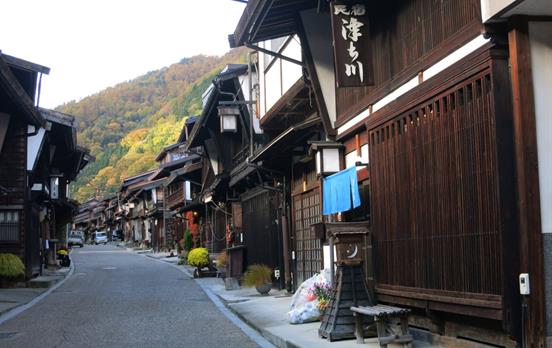
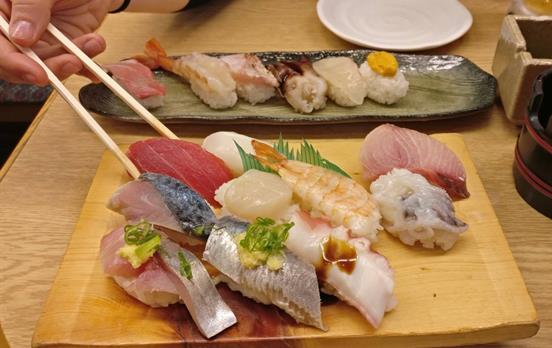
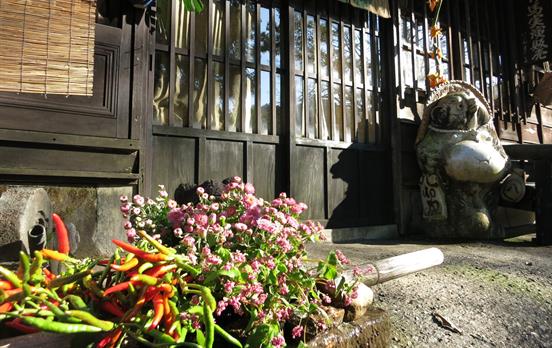
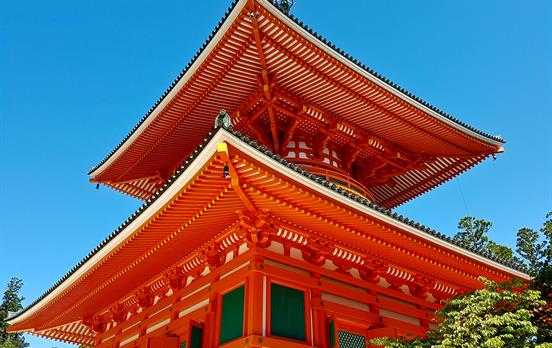
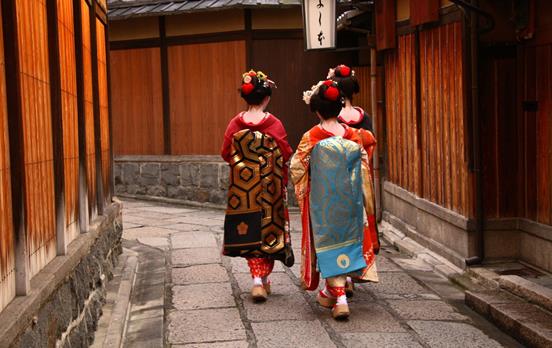
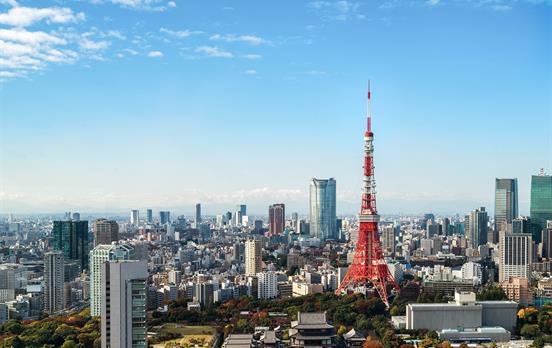
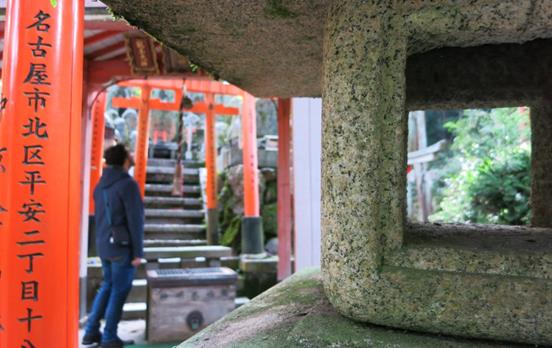
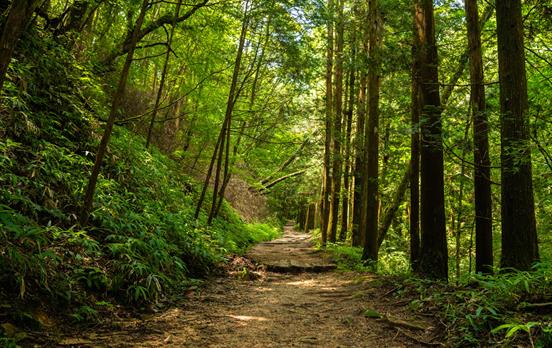
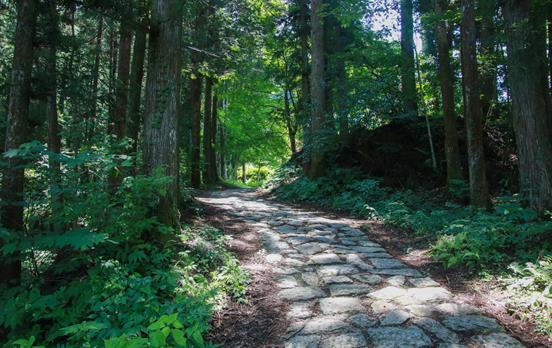


 Australia
Australia New Zealand
New Zealand South Africa
South Africa European Union
European Union